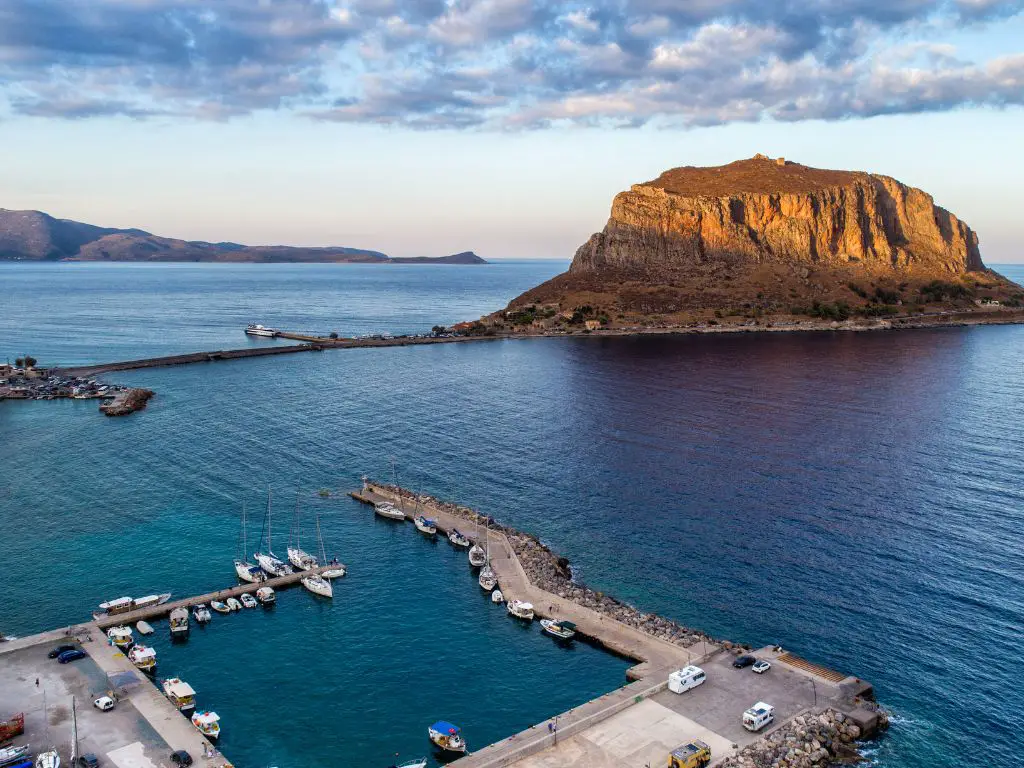Monemvasia
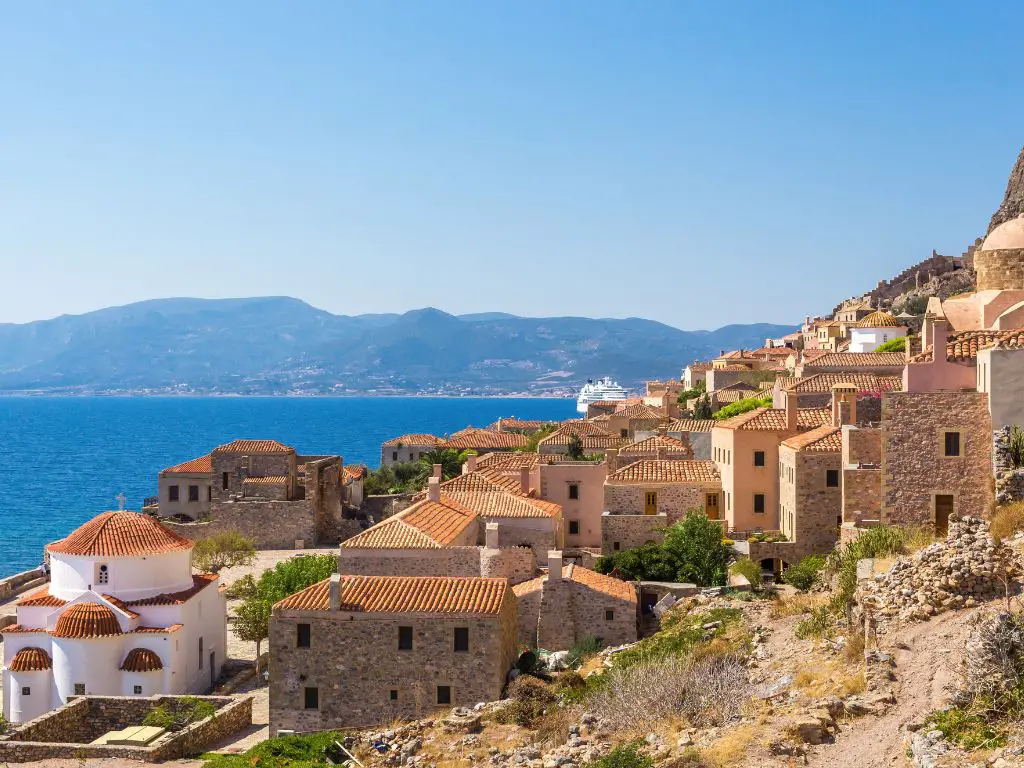
Behind medieval walls lies a well-guarded Byzantine castle city complete with churches, majestic mansions, and picturesque streets!
The name Monemvasia is derived from the Greek words “moni” and “emvasi” meaning “one entrance”. The island used to be connected to the mainland until 375 AD when an earthquake violently tore it off Peloponnese.
History
Due to its strategic location on the naval route towards the eastern Mediterranean sea, the town was often targeted by pirates, hence its fortifications.
To the naked eye, Monemvasia seems like a small rocky island off the east coast of Peloponnese. However, it is linked to the mainland by a small causeway called the bridge.
During the late Byzantine Era, Monemvasia was granted several trades and taxation privileges leading to its financial and spiritual prosperity which declined rapidly during the Venetian and later the Ottoman occupations.
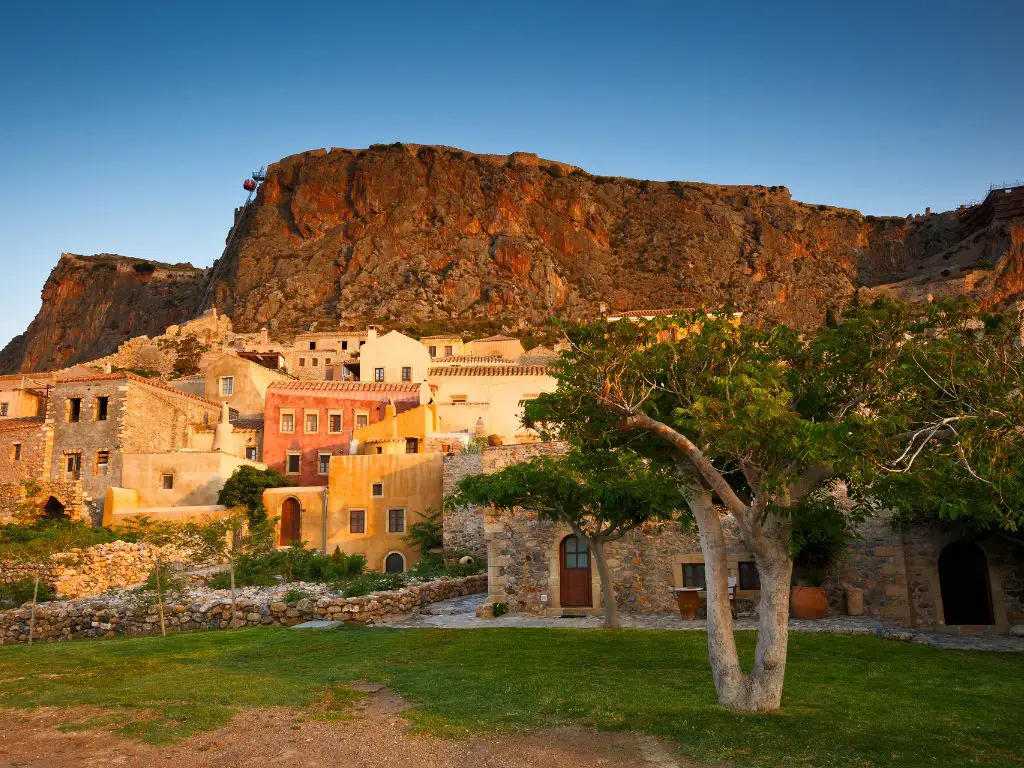
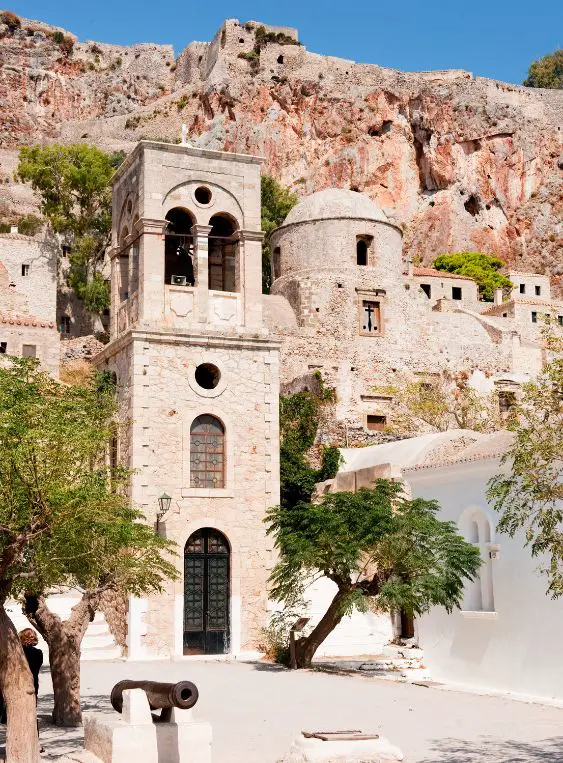
Christ Elkomenos Church
The church of Christ Elkomenos is located in the main square and is devoted to the suffering of Christ. Inside the church, one can admire Byzantine icons dating back to the 17th and 18th centuries. There are also marble sculptures from the early Christian and Byzantine times.
Kato Poli
Monemvasia is divided into two main settlements, Kato (Lower) and Ano (Upper).
If you follow the central path starting from the gates of Monemvasia, you will reach the central square, named Kato Poli or Lower Town. Contrary to the Higher Town, the Lower Town buzzes with life and energy. Here visitors can rest in one of the many hostels, restaurants, bars, and shops. They offer a uniquely authentic experience, retaining the architectural style of the old town.
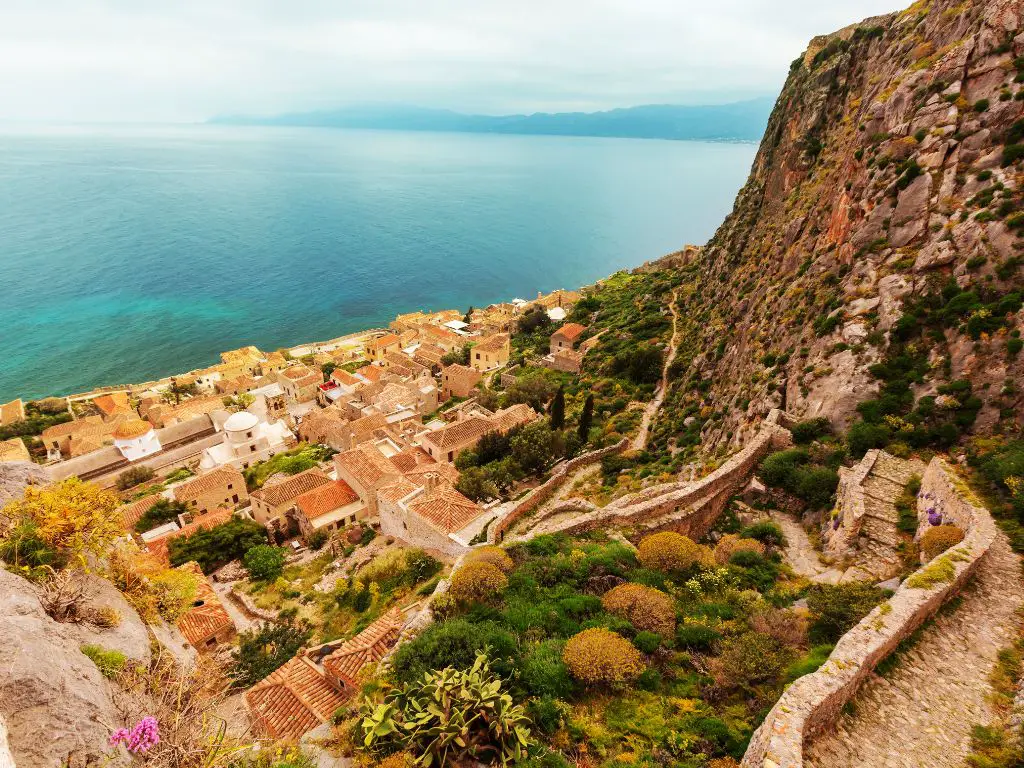
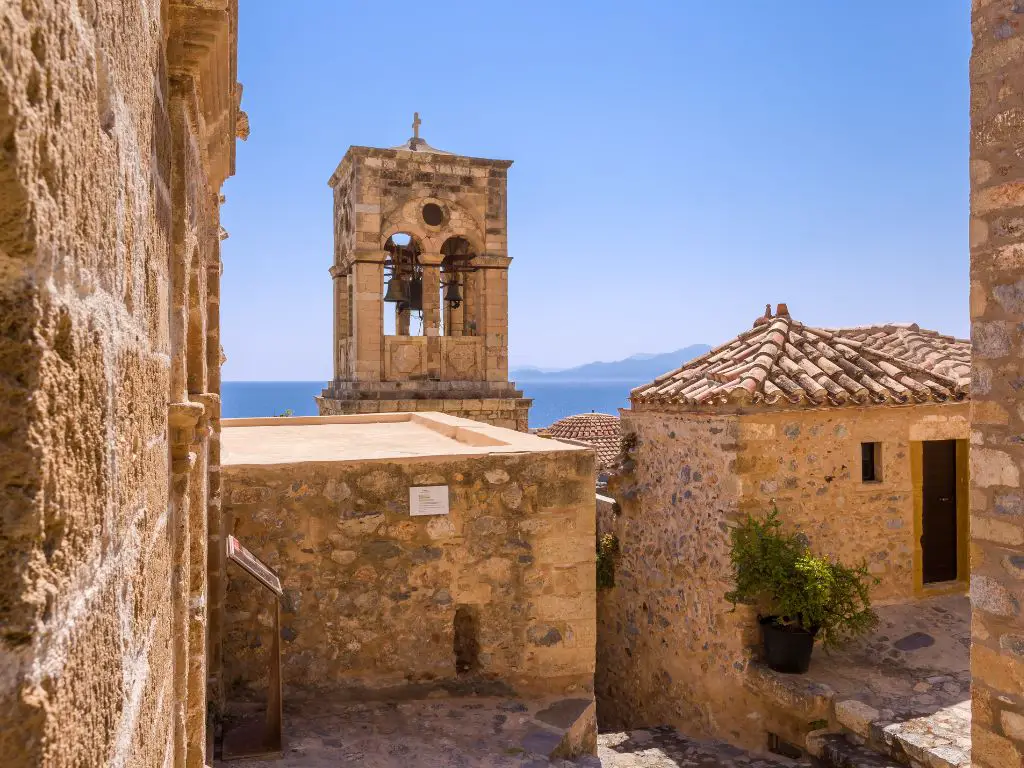
Ano Poli
Ano is the original Monemvasia built on higher grounds to avoid pirate attacks. It was later fortified by Byzantines and Venetians. Nowadays it is uninhabited but is open to visitors who want to catch a glimpse of its past glory. The only way to explore Ano is on foot as cars cannot fit on the winding narrow paths and alleyways. The best route is to take the path right next to the city’s walls. On your way up you will encounter an old fountain and a large cistern dating back to the times of the Ottoman occupation.
Hagia Sophia
The most impressive building in Upper Town is the church of Hagia Sophia.
It is one of the most important examples of Byzantine architecture in Peloponnese, which reflects the style of churches built at the same time throughout Greece and in Constantinople. Its location on the edge of a cliff adds a bit of drama to the simple, clean lines and light dome of the church inspiring awe among its visitors.
Apart from the 14th century frescoes inside the church, you will want to take a picture of the village below when you step outside. The view from the church yard is literally breathtaking. Lovers of history and architecture revel in this town where there are a total of 40 churches within the Castle walls waiting to be explored.
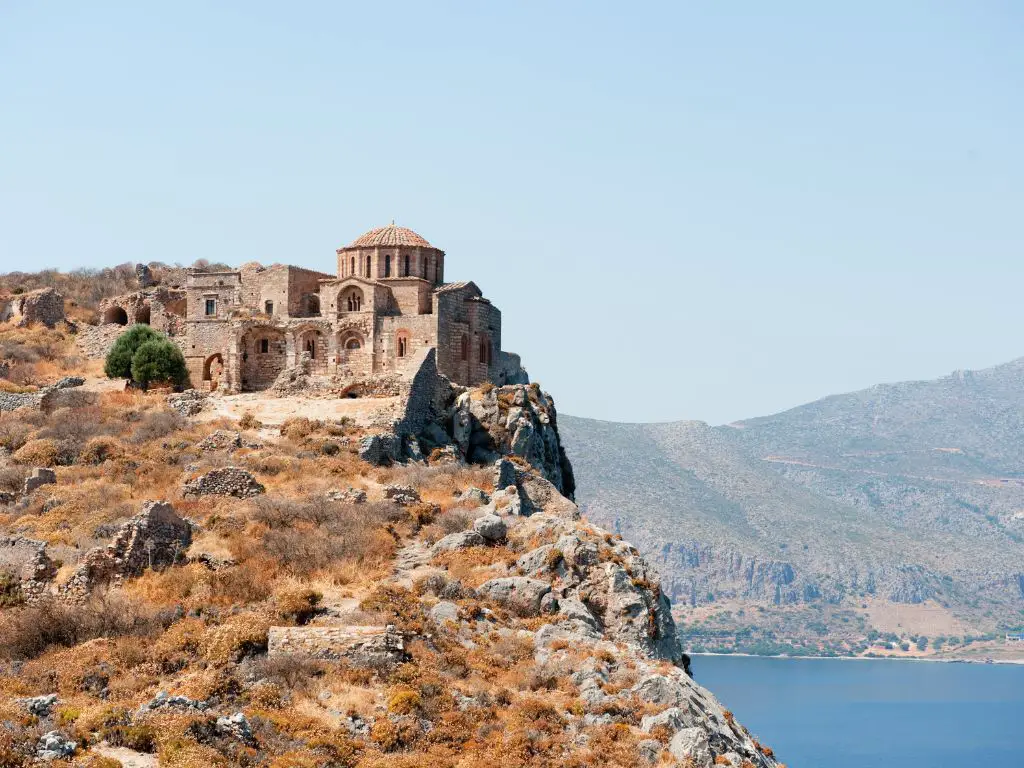

Mary Chrisafitissa
Take the path leading downwind towards the sea to find the church of Mary, the Chrisafitissa, built in the 17th century, and drink the Holy Water from the fountain there or visit the house where Giannis Ritsos, one of the most influential Greek poets of the 20th century, who was born, raised and buried.
Traditional Products
Try heather flavored honey and Malvasia wine made from sun-dried grapes, which was famous throughout Europe in the medieval times. Alternatively, follow the example of the locals and partake of bread and olive oil. The taste of fresh green olive oil on a toasted slice of bread coupled with the stunning views of Monemvasia from above, manages to redefine, in its magnificent simplicity, the concept of culinary delight and fine dining.
